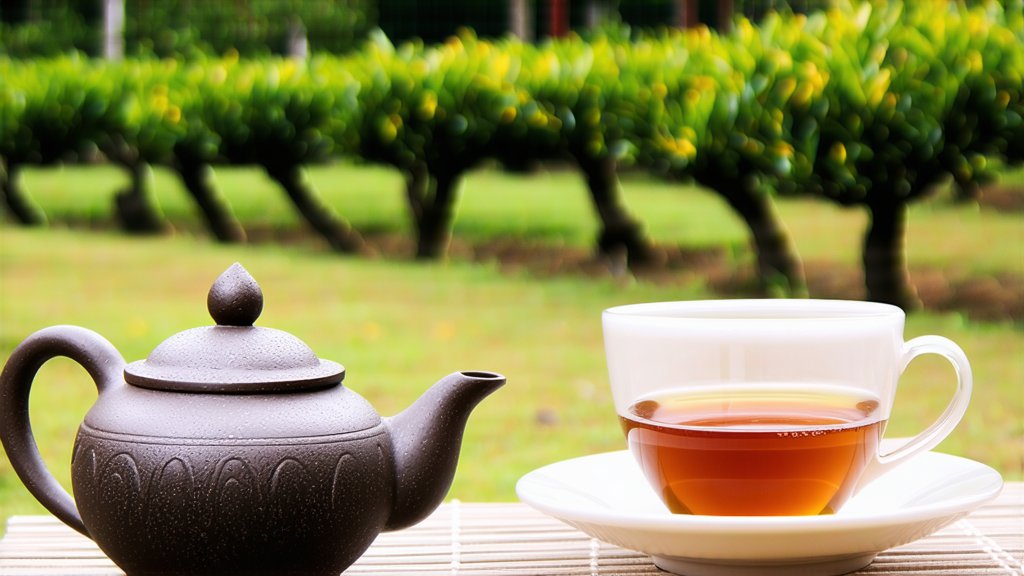
In the vast and diverse landscape of Chinese tea culture, few varieties capture the imagination quite like Keemun Black Tea. Originating from the picturesque mountains of Qimen County in Anhui Province, this exquisite tea has carved a niche for itself among connoisseurs worldwide. Its unique flavor profile and rich historical significance make it a subject worthy of exploration. In this article, we will delve into the history, types, production process, and appreciation methods of Keemun Black Tea, shedding light on its allure and the artistry behind its creation.
History
The story of Keemun Black Tea begins in the early 19th century when the first batch was produced by a local tea merchant named Huizhou. Legend has it that during a particularly harsh winter, he discovered a new method of drying the tea leaves over pinewood fires to preserve their quality. This innovative technique not only prevented the tea from spoiling but also imparted a distinctive smoky aroma that set Keemun apart from other black teas. Over time, this method evolved, and Keemun gained recognition for its unparalleled quality and unique flavor.
Types
Keemun Black Tea is broadly categorized into three main types based on the grade of leaves used in its production:
-
Keemun Mao Feng (Monkey Pick): Made from the youngest and most tender leaves, this variety features a high concentration of golden tips and a delicate, sweet flavor with a hint of smokiness. It is considered the finest quality of Keemun tea.
-
Keemun Hao Ya (Secondary Leaves): This type uses slightly more mature leaves and includes fewer golden tips. It offers a robust flavor with a balanced smoky undertone, making it a popular choice for daily consumption.
-
Keemun Gong Ting (Royal Court): Comprising older leaves and stems, this grade provides a stronger, more intense smoky flavor. While less refined than Mao Feng, it still holds a special place among those who appreciate a bolder cup of tea.
Production Process
The journey from leaf to cup for Keemun Black Tea is a meticulous one, involving several stages:
-
Withering: Freshly harvested leaves are spread out in thin layers to wilt under natural sunlight or controlled conditions. This process reduces moisture content and initiates enzymatic reactions that contribute to the tea's flavor development.
-
Rolling: The withered leaves are then rolled either manually or using machines to break down cell walls, releasing more juices and further shaping the leaves. This step is crucial for the formation of the characteristic twisted appearance of Keemun tea leaves.
-
Oxidation: Rolled leaves are left to oxidize, a process where polyphenols react with oxygen, turning the leaves a rich brown color and developing complex flavors. The duration of oxidation can vary, influencing the final taste profile.
-
Smoking: One of the defining features of Keemun tea is its smoking process. The leaves are dried over pinewood fires, which imparts a signature smoky aroma and flavor. This step must be carefully controlled to ensure the perfect balance between smokiness and the natural sweetness of the tea.
-
Sorting and Grading: After drying, the tea undergoes sorting to separate different grades based on leaf size and quality. Golden tips are often handpicked to enhance the visual appeal and flavor of higher-grade teas.
-
Packaging: Finally, the sorted tea is packaged in airtight containers to preserve its freshness until it reaches consumers worldwide.
Appreciation Methods
To truly appreciate Keemun Black Tea, one must engage in the traditional Chinese tea ceremony, which emphasizes mindfulness and respect for the tea. Here are some guidelines for an authentic experience:
-
Preparation: Start by selecting a suitable teapot made of clay or porcelain, as these materials help maintain the ideal temperature for brewing. Use freshly drawn, cold water and bring it to a boil before letting it cool slightly to around 90-95°C (194-203°F), the optimal temperature for extracting the best flavors from Keemun leaves.
-
Measurement: Use approximately 3-5 grams of loose leaf tea per 200ml of water. Adjust according to personal preference for stronger or milder flavors.
-
Infusion: Place the tea leaves into the warmed pot and pour hot water gently over them, ensuring even saturation. Cover the pot with its lid to retain heat and allow the leaves to unfurl fully.
-
Steeping Time: For the first infusion, steep for about 2-3 minutes. Subsequent infusions can be longer, as Keemun tea can be steeped multiple times without losing its flavor. Each infusion reveals different aspects of its complexity.
-
Serving: Decant the brewed tea into cups, filling them halfway to leave space for appreciation of its aroma. Hold the cup close to your nose, inhale deeply, and notice the interplay between the smoky notes and underlying sweetness.
-
Tasting: Take small sips, allowing the tea to coat your palate fully. Pay attention to the initial impression, mid-palate flavors, and aftertaste. A well-crafted Keemun should offer a harmonious blend of smokiness, sweetness, and a subtle fruitiness.
-
Appreciation: Beyond taste, partake in the meditative aspect of tea drinking. Observe the color of the liquor, the texture of the leaves, and the overall sensory experience. Reflect on the craftsmanship involved in creating such a fine tea and let it transport you to the misty mountains of Qimen.
In conclusion, Keemun Black Tea stands as a testament to China's rich tea heritage and the artistry of its tea masters. From its humble beginnings in Qimen County to becoming a global symbol of sophistication, each cup tells a story of tradition, innovation, and a deep connection to nature. Whether you're a seasoned tea enthusiast or just beginning your exploration of Chinese teas, Keemun offers a captivating journey for the senses that transcends borders and cultures.